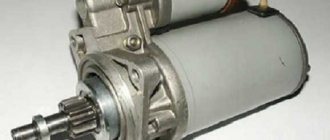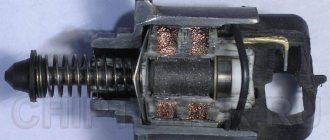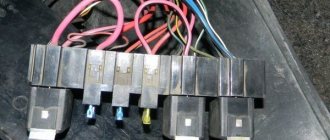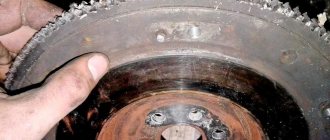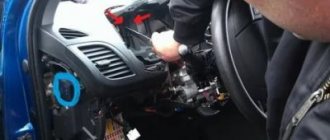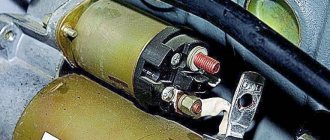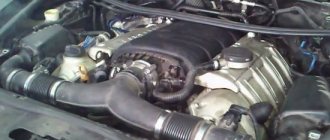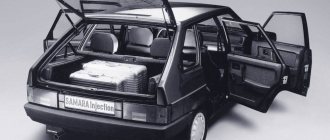The car has long become an integral part of our lives. It is quite difficult for many of us to imagine life without him. But sometimes there comes a time when the car stops starting at the most inopportune time.
Faced with such a problem, many car owners have no idea what to do in such a situation. We will try to help solve the problem when the Priora does not start and the starter does not turn the engine and what actions should be taken first.
Why doesn't the starter work?
A car starter is an electric motor that is powered by a battery and is designed to start a gasoline or diesel engine. For this reason, this device is prone to both mechanical failures and problems in electrical power circuits or problems in the contact area.
- determine the full charge of the battery;
- carry out diagnostics of the ignition switch contact group;
- check the traction relay (retractor)
- check the performance of the bendix and the starter itself;
The ignition switch contact group can be checked very quickly. To do this, just insert the key and turn on the ignition. The lighting of the lights on the dashboard will clearly indicate that the contact group is in working condition, that is, you should look for problems in the ignition switch only if the indicated lights on the dashboard do not light up after turning the key.
In the case of a suspected battery, it will be enough to turn on the headlights or headlights, and then evaluate the lighting of the light bulbs on the dashboard, etc. If these energy consumers light up very dimly or do not turn on at all, then there is a high probability of a deep discharge of the battery. You should also check the battery terminals and the ground connection to the body or engine.
Special attention should be paid to the “negative” wire, which comes from the battery and is attached to the car body. A common problem is that
ground contact may disappear
not constantly, but with a certain frequency. To eliminate it, it is recommended to disconnect the ground at the point of attachment to the body, clean the contact well, and then try to start the engine again.
To check the battery on a car with your own hands, you need to remove the negative terminal, after which the voltage at the battery outputs is measured with a multimeter. A reading below 9V will mean that the battery is low and needs to be charged.
The presence of characteristic clicks from the starter when trying to start the engine, which are also accompanied by a noticeable decrease in brightness or complete extinction of the lights on the dashboard, indicates that the solenoid relay is clicking. The specified relay can click both in the case of a discharged battery, and as a result of malfunctions of the retractor or starter itself.
We also recommend reading the article about
Why does the starter click but not turn over the engine?
. From this article you will learn about possible malfunctions that cause the traction relay to click instead of starting the engine, as well as how to check the car starter yourself.
Frequent malfunctions on popular cars
In most cases, the starter does not turn when the ignition key is turned due to oxidation and mechanical damage to the wiring. If there is poor contact with the “+” terminal of the battery, the control relay or ground, the starter does not receive enough current to crank the engine . Therefore, first of all, you need to look at the contacts in the engine compartment and check for voltage at the terminals with a tester. The most common malfunctions of specific car models, due to which the starter does not respond to the ignition key in the table.
| Why does the starter not work from the ignition key on popular car models? | |
| Auto | Weakness |
| VAZ 2110, 2111, 2112 | Wires of the central locking and ignition switch, which melt due to power surges. |
| VAZ 2108, 2109, 21099, 2113, 2114, 2115 (Lada Samara) | Oxidizing contacts of the control relay located in the engine compartment above the VUT, as well as the wiring extending from it. |
| VAZ 2101, 2102, 2103, 2104, 2105, 2106, 2107 (Classic) | The contact “nickels” of the solenoid relay often burn or oxidize. The contact group of the ignition switch fails. On later models, for example, 2107, problems with the control relay are similar to Samara (see above). |
| Niva | On old Nivas (before 21213), the ignition switch contacts burn and oxidize. On newer ones (after 21214), the starter control relay, located under the hood near the brake fluid reservoir, often fails. There is a drainage tube located nearby that drains water from under the glass, moisture from which gets onto the relay, which leads to oxidation of its contacts. |
| Lada Priora | Immobilizer problems due to which it does not see the key. |
| Lada Kalina, Lada Granta | Failure of the immobilizer, blocking the start, malfunctions in the contact group of the ignition switch and failure of the additional starter relay K3 in the fuse block. |
| UAZ | Malfunction of the 5-pin starter control relay and solenoid relay. |
| Gazelle | Poor contact of wires and failure of the starter relay. |
| Peugeot 307 | Solenoid relay fuse F8 blows, poor ground contact. |
| Kia Sid | The limit switch of the automatic transmission selector, which determines the P and N positions, is faulty. There may be poor contact at the starter terminals or at the point where the ground wire is attached to the body. |
Bendix and retractor
The above symptoms will indicate that the fault is localized to the solenoid relay or the bendix does not engage the flywheel. Note that in the case of Bendix, a more characteristic sign is that the starter crunches and does not turn the engine. Another common sign of a bad starter is that the starter buzzes but does not turn the engine.
To check the traction relay, voltage must be supplied from the battery to the power terminal of the relay. If the engine starts to turn over, then the retractor starter is obviously faulty. A frequent breakdown is the burning of the contacts. To eliminate it, you will need to remove the relay to clean the nickels.
After cleaning, you must still be prepared to quickly replace the traction relay, since in the factory the contact pads are covered with special protection that resists burning during operation. Stripping will mean that the specified layer is removed, as a result of which it is difficult to predict the moment when the retractor coins will burn again.
Now let's turn our attention to the starter bendix. Bendix is a gear through which torque from the starter motor is transmitted to the flywheel. The Bendix is mounted on a single shaft with the starter rotor. To better understand, it is necessary to understand how a starter works. The principle of operation is that after turning the ignition key to the “start” position, current is supplied to the solenoid relay.
After the engine starts (the crankshaft begins to rotate on its own) with a working starter, the key in the ignition switch is thrown back, and electric current no longer flows to the traction relay. The lack of voltage causes the retractor to disengage the bendix from the flywheel, as a result of which the starter stops spinning.
New Lada: Bosch, Brisk, Denso, NG, DVRM spark plugs for Lada Priora - which ones to choose and how to replace
Wear of the Bendix gear means that there is no normal connection with the flywheel ring. For this reason, a cracking sound may be heard when starting the engine, and the starter may spin freely without engaging and buzzing. A similar situation arises if the teeth of the flywheel rim are heavily worn.
The repair involves disassembling the starter to replace the bendix and/or removing the transmission to replace the flywheel. To check the bendix yourself, you will need to close two power contacts on the traction relay. The electric current will bypass the relay, which will determine the rotation of the starter. If the starter rotates easily and hums, you should check the quality of engagement of the bendix with the flywheel.
Answers to frequently asked questions
How can you tell if the starter relay is not working?
To determine whether the starter relay is working, apply power from the positive terminal of the battery directly to the control contact of the relay. After this, a click should sound; if it is faulty, there will be no sounds.
How to check whether the starter is working or not?
To check the serviceability of the starter itself, you need to apply current to it directly by connecting the power wires of the retractor relay (thick wire from the battery) and the electric motor (stud with a thick wire from the retractor to the starter). A working starter should start moving.
What to do if the starter does not work after turning the ignition key?
First, make sure there is voltage at the battery terminals. If you don’t have a tester, this can be done using a 12 V lamp. Then try to apply voltage directly to the starter: use a screwdriver to close the pin to which the wire from the battery goes and the control contact located nearby. If there is no reaction, check the quality of the contacts of the terminals on the battery, the ground contacts (with the body and the engine) and the contacts of the starter itself by cleaning and tightening the terminals. If the battery is discharged or the starter is faulty, you need to start the car with a pusher (manual transmission) or tow it to the repair site.
Why does the starter not work with the ignition key?
The main reasons why the car does not respond to the ignition key:
- control relay failure;
- breakdown of the ignition switch/contact group;
- wire break or short circuit;
- problems with the anti-theft system (alarm, immobilizer);
- breakage of the solenoid relay;
- starter motor failure.
If the starter turns directly, but not from the key, then the last two problems can be eliminated.
Source
Starter bushings
A frequent breakdown is also the malfunction of the starter bushings. The starter bushings (starter bearings) are located at the front and rear of the unit. These bearings are necessary to rotate the starter shaft. As a result of wear on the starter shaft bearings, the traction relay clicks, but the starter does not spin itself and does not crank the engine. This malfunction is as follows:
- the starter shaft is not in the correct axial position;
- the primary and secondary windings also close;
This situation can lead to windings burning out and power wires melting. Sometimes a short circuit occurs in the vehicle's electrical circuits, which causes a fire. In the case when the starter clicks but does not spin itself, you cannot hold the key in the “start” position for a long time. It is recommended to make several short attempts to start, as there is a chance that the shaft will be able to return to its place.
Please note that even after a successful start of the internal combustion engine, the starter will require mandatory and immediate repairs to replace the bearings. Remember, jamming of the starter shaft can lead to a short circuit and fire. We also add that a starter with problem bushings can work absolutely properly when cold, but refuse to turn when hot.
If the starter does not turn over when hot or turns the engine poorly after warming up, then you need to:
- Check the battery, battery terminals and power contacts. If the battery is in good condition and was 100% charged before the trip, but then discharged, then you should check the alternator regulator relay, alternator belt, tension roller and the alternator itself. This will prevent battery discharge and subsequent undercharging while driving;
- then you should pay attention to the ignition system and fuel supply system, check the spark plugs. The absence of comments on the operation of these systems, which is accompanied by the fact that the starter turns poorly when the battery is charged, will indicate a malfunction of the starter.
We also recommend reading the article about
how to properly charge a car battery with a charger
. In this article, you will learn about the basic requirements and recommendations for properly charging the battery, as well as how to charge the battery without a charger.
Please note that the device gets very hot together with the engine in the engine compartment. Heating of the starter leads to thermal expansion of certain elements inside the device. After repairing the starter and replacing the bushings, the indicated expansion occurs with the starter bearings. An error in selecting the required bushing sizes can lead to jamming of the shaft, as a result of which the starter does not spin or spins very sluggishly on a warm engine.
Mechanical and electrical problems
The engine starter may not work due to wear out of the bearings located at the front and rear of the engine. Their function is to ensure smooth acceleration of the starter shaft. If they are worn out, the retractor will make clicks, and the crankshaft of the power unit will remain motionless. The reasons for this problem are:
- imbalance of the starter shaft;
- burning or short circuit of winding turns.
Note that this may cause a short circuit in the vehicle's electrical circuit, which may cause a fire. If the starter does not respond to turning the ignition key, you cannot force it to work for a long time. It is best to make several short starts of the engine.
Since the design of the vehicle’s power unit starting device is based on an electric motor, the voltage necessary to increase the speed of its shaft is supplied to the winding through graphite brushes. The material they are made of does not have sufficient strength, these elements wear out quickly.
Other reasons why the starter may not respond when the ignition is turned on
In some cases, there have been malfunctions in the operation of automobile anti-theft systems (car alarms, immobilizers). Such systems simply block the supply of electric current to the starter after the security mode is removed. At the same time, the diagnostics shows the full functionality of the battery, power contacts and other elements of electrical equipment that are involved when starting the engine from the starter.
New Lada: VAZ Priora R14 wheels in Balashikha buy inexpensively in the online store with delivery | 40NOG
The next item to check is the solenoid relay. If it breaks, the starter can:
- be completely silent, that is, do not make any sounds after turning the key to the “start” position;
- hum and crank, but do not turn the engine;
- click repeatedly or once without cranking the crankshaft;
Individual situations
If the VAZ 21099 injector stops starting, you can try to close the contacts of the mechanism in a straight line.
We recommend: Oil leakage from under the crankshaft oil seal: causes and troubleshooting
But sometimes there are emergency situations when the device stops functioning, let’s consider a few of them:
- The injection engine does not start in cold weather, but all devices work normally, the battery is charged. If there is no click, you should first diagnose the safety components, electrical circuit, and also the solenoid relay. If the device clicks, the relay must be replaced.
- The starter turns all day, there is a spark, but in the evening the engine stops starting. Before checking the starter, it is necessary to fully charge the battery, and then clean the contacts on both the battery and the mechanism itself. If these steps did not help solve the problem, you need to check the battery itself more carefully - try closing the contacts with a wire, which may cause a spark to melt. If this does not help, try applying a positive charge from the battery directly to the relay. If there are no changes, the unit will have to be replaced.
- If the car was operated normally all day, but after parking for five minutes it stopped starting, you can try to close the mechanism. You need to directly close two bolts on the relay; if this helps, but later the problem reappears, then disassemble the unit completely. Most likely, the problem lies directly in the erasing of the brushes. In this case, they will need to be changed.
- The unit does not turn at all, but the car can be started from the pushrod. If the problem is not with the starter, then check the fuse box and ignition switch. But before this, you should check the wiring - the reason may lie in the oxidation of the contacts.
If the Priora does not want to start
When the car does not start and its starter, accordingly, does not turn, then most likely the culprit is the battery. This is indicated by the following additional symptoms:
- the solenoid relay clicks;
- The instrument lights on the panel go out.
The easiest way to test the battery is to turn on the headlights. If they burn weakly, you will have to charge the battery.
When the battery appears to be in good condition, but the car still does not start, feel the cables connected to it. If the ends screwed to the terminals (or the starter itself) are warm, then there is poor contact or oxidation. All this creates increased resistance, stealing battery power.
Here:
- unscrew the wires;
- clean the battery leads and terminals themselves;
- return the cables to their place;
- Make sure that the ground on the body and the positive on the starter are securely fastened.
Next, check if there is voltage at the ignition switch. This is done like this:
- disconnect the connector of the cable going from it to the traction relay;
- turn the key to the engine start position;
- measure the voltage at the connector.
Reasons for failure of the starting system
Most often the following happens:
- For some reason the electric starter does not turn on - the reason is a broken wiring, short circuit or breakdown of the traction relay;
- the starter starts, but an uncharacteristic clicking sound is heard - damage to the coil of the above relay or discharge of the battery;
- the start works, but the starter does not turn or rotates too slowly - the battery is dead.
In addition, the reason here may lie in:
- loss of contact;
- brush wear;
- collector contamination;
- short circuit of the winding wires.
It also happens that the starter works normally, but the flywheel still does not rotate.
Here, first of all, you need to make sure that the attachment to the crater installed on the clutch is not broken. Then you will have to check the integrity of the teeth of the flywheel itself or the drive gear.
How to remove the electric starter
The procedure in this case is as follows:
- remove the terminals from the battery;
- the “plus” connector is removed from the starter;
- removed from the relay block;
- The nuts securing the faulty unit are unscrewed.
Then you can safely remove it.
Next you will need to check the functionality of the relay. To do this, take emergency wires to start from another car. The negative one is installed on the battery and on the starter housing. “Plus” is connected to the relay. The latter in this case (if it works properly) is triggered and moves the gear. The absence of this reaction indicates a breakdown of this element.
conclusions
Let's look at diagram 1 again. If the key is not turned to the Start label, terminal S is “hanging in the air.” This can be done for any car, even if the circuit has an additional relay. This means that it will not be necessary to disconnect the standard wire from terminal S... And in the case of a VAZ, the disconnection is carried out in order to gain access to the terminal.
We removed the filter, disconnected the plug, and tried to close it...
If the engine filter cannot be removed or access is blocked by the battery, we do it differently - we use only the crank.
It is better to close the contacts not with a screwdriver, but with any wrench (see photo). It is desirable that the handle be insulated.
12 Volt voltage is not dangerous, but errors can result in blown fuses. Good luck.
For those who do not understand everything: the filter must be removed from the mounts, but not from the “corrugation”. The filter housing is placed on the battery.
Lada won't start when cold
Check how fast the crankshaft spins on your Priora. Too low a speed indicates:
- dead battery;
- hardening of the lubricant.
The absence of any reaction from the motor suggests that the problem lies in:
- fuel system - sometimes condensate freezes there;
- a sensor that monitors the temperature of the antifreeze;
- loss of tightness of nozzles;
- weak compression in the cylinders;
- failure in the on-board computer.
If the car starts unstably in winter, then perhaps there is low-quality gasoline in the Priora tank or a lot of condensate has accumulated. It would also be a good idea to look at the spark plugs and the cables leading to them from the distributor, the ignition unit itself, and the sensor that monitors the oxygen level.
Common starter problems and their causes
Before removing and replacing the device with a new one, let's look at the most common unit malfunctions:
- The starter unit does not turn on. The cause of the problem, most likely, is a broken contact or a short circuit in the electrical circuit of the device. Also, the mechanism may not turn on due to a breakdown of the traction relay.
- When trying to start the engine, clicking noises are heard. If the battery is charged, the reason may be loose contacts in the electrical circuit or a breakdown of the holding winding of the traction relay.
- The mechanism turns on but does not rotate or rotates very slowly. If the battery is not discharged, then the reason should be sought, again, in broken contacts or their burning on the relay. Also, rotation may be difficult as a result of contamination of the commutator or wear of the brush assembly; it is quite possible that the reason lies in a short circuit in the windings. Moreover, the circuit can be either short or interturn.
- The mechanism turns on and its armature rotates, but the flywheel is motionless. Most likely, the problem lies in the loosening of the assembly clamp to the clutch housing or physical damage to the teeth of the flywheel or gear. Also, the reason may be slipping of the clutch, failure of the lever, or breakage of the buffer spring and drive ring.
- After successfully starting the engine, the starter mechanism does not turn off. The problem in this case may be a failure of the freewheel or burning of the relay contacts. If this is the case, then the engine must be turned off as quickly as possible to prevent complete failure of the unit (video author - Lexin channel).
Starter operating principle
This device itself is a conventional electric motor. A gear is installed on it, which meshes with the flywheel, which rotates when the power unit starts. A traction relay is also attached to the housing. The functions of this element include:
- gear movement control;
- starter disconnection.
When the key is turned to the starting position, voltage is supplied to the relay, exciting the electromagnet windings, then the contacts close. At the same time, the gear begins to rotate and the motor starts.
New Lada: What to do if the doors do not close well on the Lada Largus?
When the key is released, the voltage to the relay windings stops supplying and the contacts separate. The starter is accordingly turned off. This is, in general, the entire description of the operation of the node in question.
Information about the design of the starter and its supply wiring
An automobile starter is attached to the engine block and is designed to impart rotation to the crankshaft through a ring gear on the circumference of the flywheel. The main components of the starter:
- An electric motor consisting of a rotor, a stator and a brush unit that powers the rotor windings.
- Freewheel with drive gear (Bendix). This also includes the simplest mechanism that moves the coupling along the shaft.
- Solenoid relay. A powerful solenoid that controls the supply of the clutch and also closes the power contacts of the electric motor.
Two electrical circuits are connected to the starter, a power supply and a control or signal circuit. The first supplies all the energy consumed during operation, and the second serves to turn the device on and off.
Starter operation in normal mode
When the driver gives a command to start the engine, the ignition switch contacts that switch the starter are closed, and voltage is supplied to the control relay. It is used to unload the contact group of the lock from high currents of the pull-in winding. Sometimes this relay is missing, then the ignition switch is made more massive, capable of switching without being burned by significant currents.
After the relay or ignition switch, if it is absent, the signal comes to the control contact of the solenoid relay. Both of its windings are triggered, after which the retractor is excluded from the circuit, and the retainer continues to supply power through the power contacts to the electric motor. At the same time, due to the movement of the solenoid armature, the freewheel engages with the flywheel, imparting rotation to it from the starter. When the engine starts, it throws the clutch back, thereby preventing the starter from “racing” at high uncontrolled speeds. The driver turns off the starter, removing the voltage from the holding winding, the spring returns the solenoid armature to the forward non-working position. Sometimes this is done automatically by control electronics.
Ignition
Ignition problems, as experts say, occur quite often in Priora. It is relatively easy to verify the functionality of this system. This is done by checking for the presence of a spark on the spark plugs. If it is not there, then it is possible that:
- the ignition unit is broken;
- The crankshaft and distributor sensors do not work correctly.
To conduct a full diagnosis, you will need to visit a car repair shop. Here, special equipment is used, through which it is easy to determine which element is causing the problem.
If there is no spark at the spark plugs, we can say with a high degree of confidence that they have failed:
- ignition unit;
- his reel.
